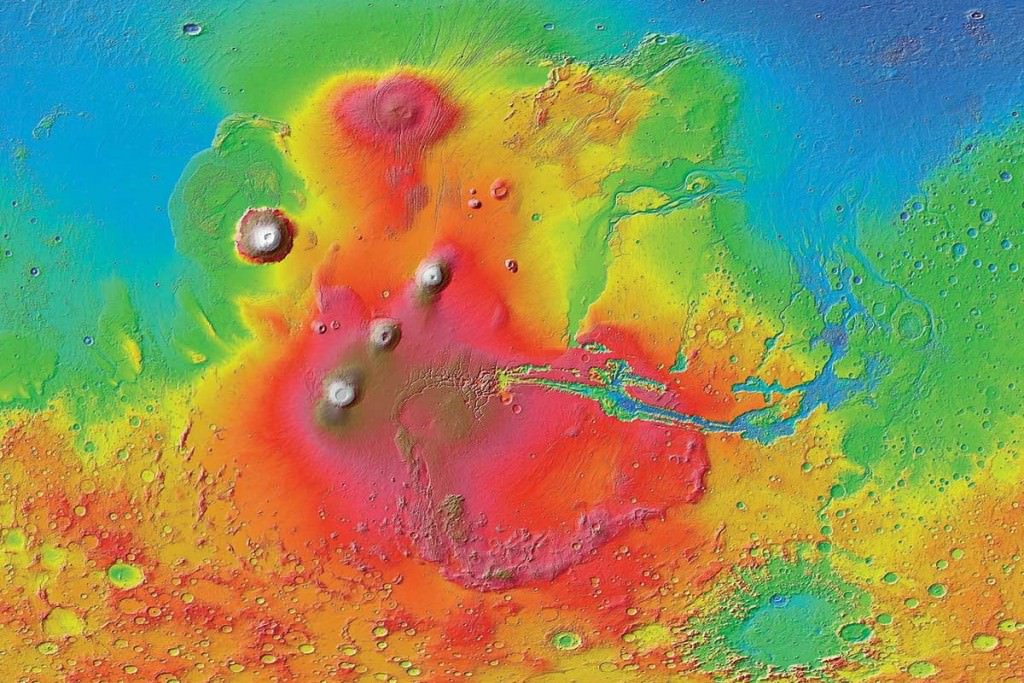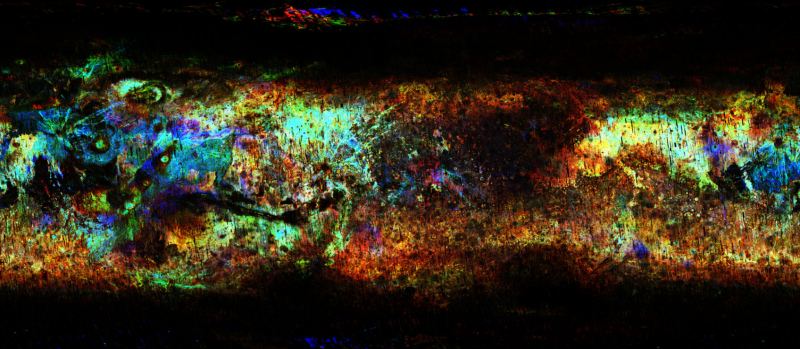We Now Know Exactly Which Crater the Martian Meteorites Came From
By Evan Gough
Mars is still quite mysterious, despite all we’ve learned about the planet in recent years. We still have a lot to learn about its interior and surface evolution and how changes affected the planet’s history and habitability. Fortunately, an impact on the red planet sent clues to Earth in the form of meteorites.
The geological information contained in these meteorites would be even more valuable if we knew exactly where they came from. A team of researchers say they’ve figured it out.
According to a new study, the Martian meteorites came from Tooting crater, a large crater in Mars’ Tharsis region. The Tooting crater is 28 km (17 mi) in diameter and 1200 meters (3900 ft) deep. It’s only a million years old, which is young for an impact crater.
The new study is titled “The Tharsis mantle source of depleted shergottites revealed by 90 million impact craters.” It’s published in the journal Nature Communications. The lead author is Dr. Anthony Lagain, from Curtin University’s Space Science and Technology Centre in the School of Earth and Planetary Sciences.
These Martian meteorites are the only Mars samples we have. Hopefully, the Mars Sample Return mission will deliver some more to Earth in the next decade. The lunar samples returned by the Apollo missions have been generating scientific returns for decades, and hopefully, the Mars samples will eventually do the same.
But for now, it’s meteorites.
There are five broad categories of Martian meteorites, including the shergottites, which this study focuses on. Shergottites are the most abundant type of Martian meteorite and make up about 75% of Martian meteorites. They’re igneous rocks that are also categorized into three main sub-groups.
Scientists have been researching the source of the shergottites for years. One of the puzzling things about them is their age. They appear to have crystallized approximately 180 million years ago, which doesn’t line up with the much greater age of most of the Martian surface.
The fact that the meteorites come from Tooting crater in the Tharsis region is significant for our understanding of Mars. The Tharsis region is a vast volcanic plateau that’s home to a trio of shield volcanoes called Tharsis Montes. The Solar System’s largest volcano, Olympus Mons, borders the Tharsis region.

“This implies that a major thermal anomaly deeply rooted in the mantle under Tharsis was active over most of the geological history of the planet…” the authors write. This volcanic hot spot is similar to the one that likely underlies Hawaii. But since Mars has no tectonic plates, the plume of magma from the hot spot was able to build up over billions of years to create the Tharsis region.
In a press release, co-lead author Professor Gretchen Benedix, also from Curtin University’s Space Science and Technology Centre, said, “This finding implies that volcanic eruptions occurred in this region 300 million years ago, which is very recent at a geological time scale. It also provides new insights on the structure of the planet, beneath this volcanic province.”
There are tens of millions of craters on the Martian surface, a testament to the chaotic early days of the Solar System. This study made use of machine learning-based crater mapping. Altogether, the team made a database of 90 million craters. They adapted a Crater Detection Algorithm to do it.
“In this study, we compiled a new database of 90 million impact craters using a machine learning algorithm that allowed us to determine the potential launch positions of Martian meteorites,” Dr. Lagain said.
In order for an impact to send debris into space, the debris must be travelling above Mars’ escape velocity of 5km/second. But not all of the debris from an impact will reach that speed. Only a fraction will be able to leave Mars, and the rest will fall back to the surface. Simulations show that impacts powerful enough to send debris into space must make craters larger than about 3 km in diameter. The debris that falls back to the surface creates secondary craters.
And this is where this research gets really interesting.
These secondary craters are smaller and rapidly filled and obliterated within about 50 million years of their formation. “Therefore, the occurrence of radial patterns of small secondaries associated with a primary crater is a diagnostic feature of a recent impact,” the authors explain.
Since the shergottites launched from Mars are only about 1.1 million years old, their source crater should be surrounded by an identifiable pattern of secondary craters. There hasn’t been enough time for the craters to be obliterated. There are existing databases of Martian craters, but they don’t contain all the small secondary craters. That’s why the team adapted an algorithm to identify these craters and build their own database of nearly 90 million of them.

“In this work, we adapt a Crater Detection Algorithm (CDA) to detect craters <1?km on the whole surface of Mars,” the authors write in their paper. “We build a database of 90 million impact craters and identify secondary crater rays system to locate the crater candidates responsible for the ejection of Martian meteorites.”

“By observing the secondary crater fields – or the small craters formed by the ejecta that was thrown out of the larger crater formed recently on the planet, we found that the Tooting crater is the most likely source of these meteorites ejected from Mars 1.1 million years ago,” Professor Lagain said.
“For the first time, through this research, the geological context of a group of Martian meteorites is accessible, 10 years before NASA’s Mars Sample Return mission is set to send back samples collected by the Perseverance rover currently exploring the Jezero crater.”
This study highlights the growing importance of machine learning in science. We now have an enormous amount of planetary data on Mars, and the data keeps growing. But it’s nearly impossible for humans to sort through it all.
“We would not have been able to recognize the youngest craters on Mars without counting the tens of millions of craters smaller than one kilometre across,” Professor Benedix said.
It’s all thanks to the algorithm, which can be further improved. “Mapping craters on Mars is a first step. The algorithm we developed can be retrained to perform automated digital mapping of any celestial body. It can be applied to Earth to assist with managing agriculture, the environment and even potentially natural disasters such as fires or floods,” Dr. Lagain said.
More:
- Press Release: New Curtin study pinpoints likely home of Martian meteorites
- Paper: The Tharsis mantle source of depleted shergottites revealed by 90 million impact craters
- Universe Today: InSight has Mapped out the Interior of Mars, Revealing the Sizes of its Crust, Mantle, and Core
The post We Now Know Exactly Which Crater the Martian Meteorites Came From appeared first on Universe Today.

November 9, 2021 at 02:17AM
via Universe Today read more...

Post a Comment